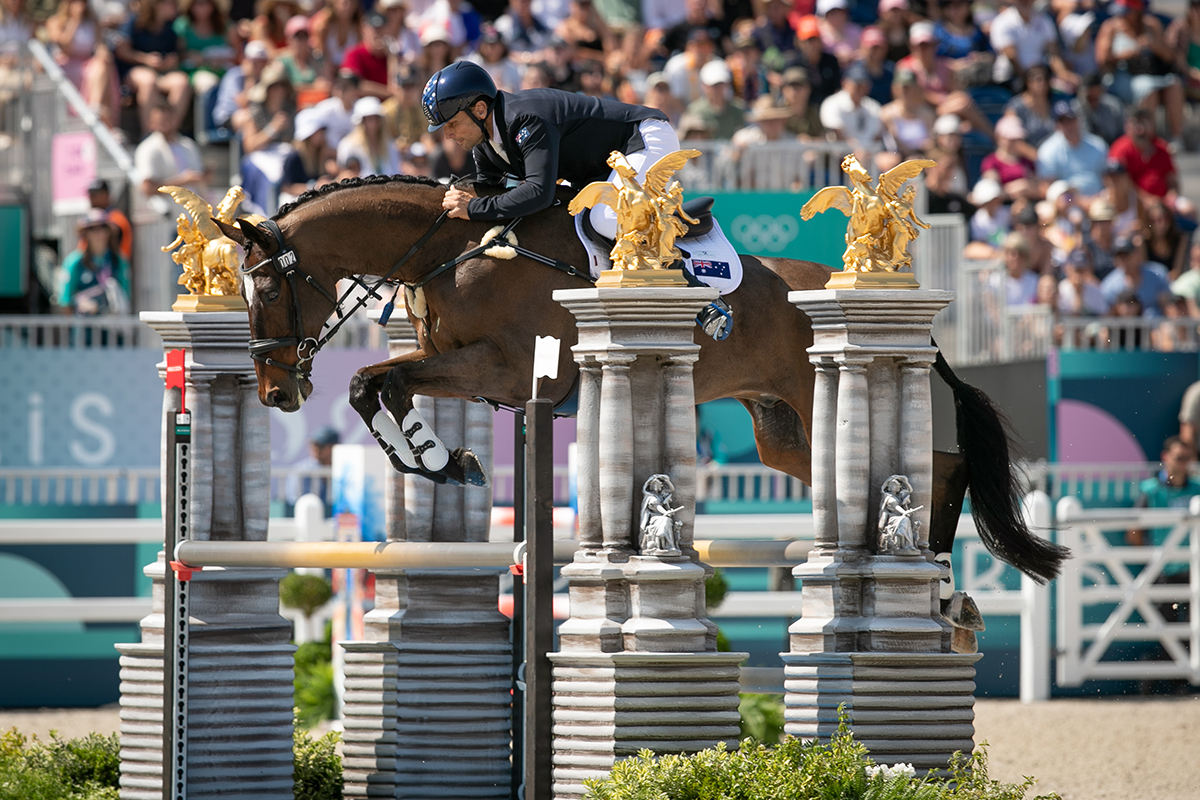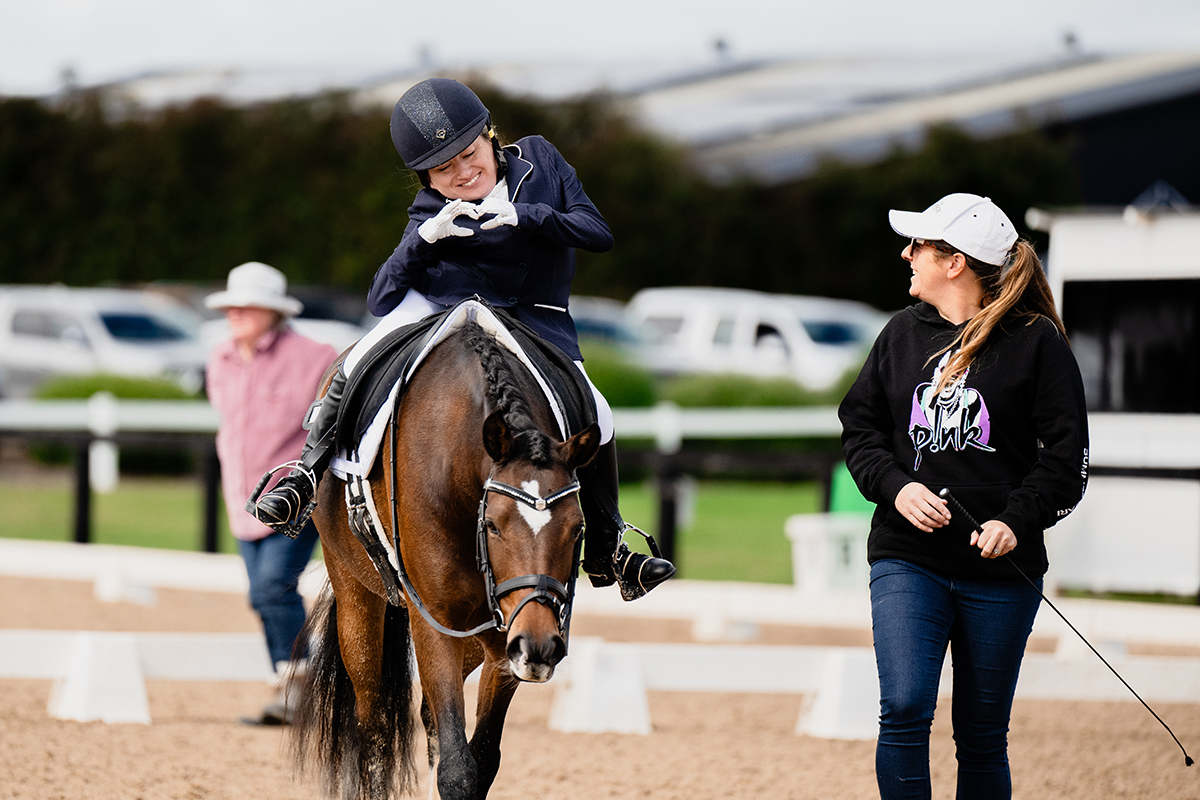When I read in EQ Life last month that Shane Rose had received his fourth Olympic selection for Paris – despite a horrendous training fall on March 11 this year – I thought, what resilience!
Resilience is a mindset so baked into the horse person identity that we rarely take a moment to even consider it, but it is something we all share with each other, at all levels, and it’s a really valuable skill I think we underrate in ourselves. As an attribute, or characteristic, it also feeds into the mythical Australian character, from Anzac diggers to our current sports heroes and social activists. So it’s worth burrowing down into it as a quality as it relates to riding and caring for horses.
To be clear, I’m not just thinking here about professional riders whose income and career path depend on their bounce-back-ability. Shane Rose has resilience running through him like the pink wording twisted through a stick of rock candy. His resolve, grit, and ability to withstand pain is legendary – but perhaps, I wondered, a little bit of Shane’s ingrained perseverance and grit exists in all of us “lifer” horse people.

“It’s just really cathartic,
learning how to use
body language.”
I went looking for some science to back up my suspicions, and found Dr Laura Sanchez’s article “Lace up Your Boots and Do Something” in the journal Symbolic Interaction, where she concludes that the “horse person-derived resilient mindset is useful in dealing with challenges in personal relationships and social interactions outside of the riding community”. Put simply, what we do with our furry equid four-leggeds helps us to be strong in the rest of our lives!
Published in May this year, Dr Sanchez’s study is the first in horse-human relations studies to do something as seemingly straightforward as ask 34 girls and young women (aged 10-23) whether they felt their horse relationships fostered resilience beyond the stables.
RESPONSIBILITY & LEADERSHIP
In her findings, horse riding and care in the young develops resilience, responsibility, and leadership, which are highly transferrable to the non-horse world. In her ethnographical (interview based) research, Dr Sanchez, a sociologist, set her study at a large equestrian centre in the Mid-West of the US. Catering to locals in the “English” discipline, the barn offers agistment and lessons, as well as organising its own small competitions. Dr Sanchez herself agists her two horses at this focal property, so as well as being convenient she had plenty of opportunities to observe behaviour and conduct semi-structured interviews with insider knowledge.
The girls’ families were mostly not moneyed or wealthy, implying that their passion for horses was most likely a bit of a financial strain, and which reflects a strong commitment. Dr Sanchez noted the parents ranged from “working class to upper middle class… primarily white with a few participants of Hispanic ethnicity… Most parents worked in middle class occupations such as clerical workers, family farmers, government and university employees, and hospital technicians”.
CARING FOR HORSES
She tied resilience back to two key related parts of being a “horse person”: improving riding skills, and empathetically caring for horses. In focusing her interviews around these two elements, she observed that girls talked about riding and caring for their horses as a process of “flowing’” together, in what Dr Sanchez terms “embodied inter-subjectivity”.
This notion of “flow” between humans and animals is another way of describing the verbal but mostly non-verbal constant flow of communication we have with our equine companions, which can be quite hard to describe in words. For example, one 22-year-old interviewee said, “It’s just communicating without speaking. It’s just really cathartic, learning how to use body language.”
Reading through select quotes from the interviews I was quite bowled over by the maturity of the girls’ outlooks and their capacity for reflection. In fact there is a mindfulness, indeed a wisdom, which might have come from much older hearts and minds, as well as an ability to articulate thoughts and feelings.
For example, in the interviews the young riders frequently drew connections between empathy for horses and empathy for humans, in a way that fostered adaptability, responsible leadership and greater compassion. A 15-year-old noted confidence in decision making as a key form of adaptability: “With horses, you never know what’s coming at you. You never know what’s going to happen and that’s so true of life.”

‘LEARN TO CARE’
A 10-year-old said: “You have to learn to care for [horses.] You have to know their feelings. You have to take that into account. And that’s a lot like doing it with other people, you have to have input from their feelings as well as yours.”
Taken as a whole it’s easy to see from the interviews how resilience gained from the horse person selves the girls cultivated spilled over into the rest of their lives in tangible ways. In Dr Sanchez’s words, there is no doubt “something real happens… when young people interpret their own humanity through the horse gaze”.
The scientific jury is in, and there are definitely psychological benefits to horse owning and riding; the foremost of which is resilience. Apparently horse owning “builds up that bank” of mental strength you can use again in the future to tackle similar situations.
Dr Sanchez’s results are relevant not only to parents, to those who teach the younger generation of riders or who are involved in young riders and development, but to all of us who have come to horses earlier or later in life.
This is important and fascinating research as it shows how our younger generations of horse people are being prepared by their horsey identities for the very difficult and uncertain futures we’re offering them. EQ
Anyone interested in reading the Sanchez article in full can find it free and full text here.

